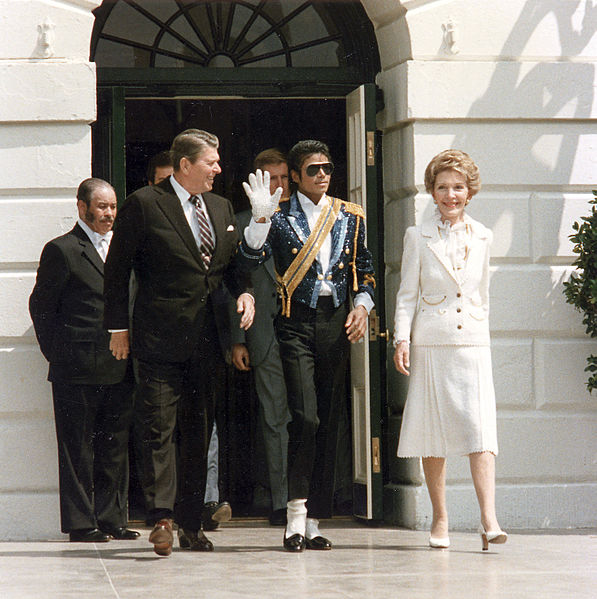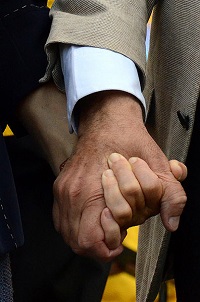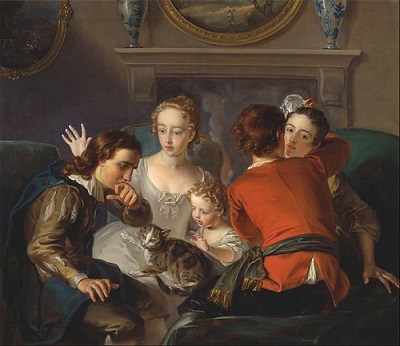Functional magnetic brain imaging (fMRI) is a method that allows us to study the workings of the human brain while people perceive, reason and make decisions. The principle on which it is based is that, when nerve cells or neurons in a particular region become active, there is an increase in the blood supply to that brain area. This can be visualized because the scanner can be sensitized to the changes in the blood oxygen level that occur when the nerve cells become active.
The post What has functional brain imaging discovered? appeared first on OUPblog.
Who has never been embarrassed by a close other? Imagine you and your best friend dress up for the opera, both of you very excited about this spectacular event taking place in your home town. It is the premiere with the mayor and significant others attending. You have a perfect view on the stage and it seems a wonderful night.
The post Keep your friends close… Really? appeared first on OUPblog.
Disgusting or delighting, exciting or boring, sensual or expected, no matter what you think about it, 50 Shades of Grey is certainly not a movie that passes by without leaving a mark on your skin. Based on E.L. James’ novel (honestly, somehow even more breathtaking than the movie), it tells the story of the complicated relationship between the dominant multi-millionaire Christian Grey, and the newly graduated, inexperienced, and shy, Ana Steele.
The post 50 shades of touch appeared first on OUPblog.
By Arturo Hernandez
That any person could become an expert in something if they simply spend about 3 hours per day for ten years learning it is an appealing concept. This idea, first championed by Ericsson and brought to prominence by Gladwell, has now taken root in the popular media. It attempts to discuss these differences in terms of the environment. The idea is that practice with the purpose of constantly gathering feedback and improving can lead any person to become an expert. If becoming an expert requires 10,000 hours, does a prodigy need 20,000.
Lets consider, Michael Jackson, as an example of a prodigy. He grew up in a musical family in Gary, Indiana just outside Chicago. His father Joe played in an R&B band. All of his siblings played music in one way or another. Unlike his siblings and father, Jackson did not really play any instruments. However, he would compose songs in his head using his voice. One morning he came in and had written a song which eventually became ‘Beat It’. In the studio, he would sing each of the different parts including the various instruments. Then the producers and artists in the studio would work on putting the song together, following his arrangements.
Work in cognitive neuroscience has begun to shed light on the brain systems involved in creativity as being linked to psychometric IQ. Work by Neubauer and Fink suggests that these two different types of abilities, psychometric IQ and expertise, involve differential activity in the frontal and parietal lobes. They also appear for different types of tasks. In one study, taxi drivers were split into a high and low group depending on their performance on a paper and pencil IQ test. The results showed that both groups did equally well on familiar routes. The differences appeared between groups when they were compared on unfamiliar routes. In this condition, those with high IQs outperformed those with low IQ. So expertise can develop but the flexibility to handle new situations and improvise requires more than just practice.
Reports of Michael Jackson’s IQ are unreliable. However, he is purported to have had over 10,000 books in his reading collection and to have been an avid reader. His interviews reveal a person who was very eloquent and well spoken. And clearly he was able to integrate various different types of strands of music into interesting novel blends. If we were to lay this out across time, we have perhaps the roots of early genius. It is a person who has an unusual amount of exposure in a domain that starts at an early age. This would lead to the ability to play music very well.

Jackson came from a family filled with many successful musicians. Many were successful as recording artists. Perhaps Michael started earlier than his siblings. One conclusion we can draw from this natural experiment is that creative genius requires more than 10,000 hours. In the case of Michael Jackson, he read profusely and had very rich life experiences. He tried to meld these experiences into a blended musical genre that is uniquely his and yet distinctly resonant with known musical styles.
The kind of creativity is not restricted to prodigies like Michael Jackson. Language, our ultimate achievement as a human race, is something that no other animal species on this planet shares with us. The seeds of language exist all over the animal kingdom. There are birds that can use syntax to create elaborate songs. Chinchillas can recognize basic human speech. Higher primates can develop extensive vocabularies and use relatively sophisticated language. But only one species was able to take all of these various pieces and combine them into a much richer whole. Every human is born with the potential to develop much larger frontal lobes which interconnect with attention, motor, and sensory areas of the brain. It is in these enlarged cortical areas that we can see the roots of creative genius. So while 10,000 hours will create efficiency within restricted areas of the brain, only the use of more general purpose brain areas serve to develop true creativity.
Arturo Hernandez is currently Professor of Psychology and Director of the Developmental Cognitive Neuroscience graduate program at the University of Houston. He is the author of
The Bilingual Brain. His major research interest is in the neural underpinnings of bilingual language processing and second language acquisition in children and adults. He has used a variety of neuroimaging methods as well as behavioral techniques to investigate these phenomena which have been published in a number of peer reviewed journal articles. His research is currently funded by a grant from the National Institutes of Child Health and Human Development. You can follow him on Twitter
@DrAEHernandez. Read his
previous blog posts.
Subscribe to the OUPblog via
email or
RSS.
Subscribe to only brain sciences articles on the OUPblog via
email or
RSS.
Image credit: Michael Jackson with the Reagans, by White House Photo Office. Public domain via Wikimedia Commons.
The post Michael Jackson, 10,000 hours, and the roots of creative genius appeared first on OUPblog.

From Facebook’s purchase of Oculus VR Inc. to the latest medical developments, technology is driving new explorations of the perception, reality, and neuroscience. How do we perceive reality through the sense of touch? Alberto Gallace is a researcher in touch and multisensory integration at the University of Milano-Bicocca, Italy, and co-author of In touch with the future: The sense of touch from cognitive neuroscience to virtual reality. We recently spoke to him about touch, personal boundaries, and being human.
Out of all the human senses, touch is the one that is most often unappreciated, and undervalued. When did you first become interested in touch research?
I was in Oxford as a visiting PhD student and working on multisensory integration, in particular on the integration between tactile and visual signals in the brain. Soon I realized that, despite the fact that is a very important sensory modality, there was not much research on touch, and there were not even a lot of instruments to study such sensory modality. I started by working more with engineers and technical workshops then with psychologists and neuroscientists, just because I needed some device to test the sense of touch in a different way as compared to what was done in the past. Touch was mainly studied with reference to haptic object recognition, mostly on visually impaired individuals or in terms of its physiological mechanisms. Many of the most relevant aspects of touch were very little, if not at all, investigated.
 We use touch for walking, talking, eating, nearly everything basically. It also plays a major role on our interpersonal relationships, it affects the release of hormones and it contributes to define the boundary of our self.
We use touch for walking, talking, eating, nearly everything basically. It also plays a major role on our interpersonal relationships, it affects the release of hormones and it contributes to define the boundary of our self.
To my students I often say, where our touch begins, we are. I wanted to understand more of these topics. I wanted to compare touch with other sensory modalities. In doing that I was convinced that research on touch had to get away from the fingertips or hands and extend to the whole body surface. The more I studied this sense, the more I became interested in it. For every question answered there were many more without responses. I like touch a lot because there are many things that still need to be understood about it, and I am a rather curious person, particularly when it comes to science.
What do you think has been the most important development in touch research in the past 100 years?
I am not sure if it’s the most important development, but what I certainly consider important is the recent study of certain neural fibres specialized in transmitting socially-relevant information via the sense of touch. That is, the C tactile afferents in humans, that are strongly activated by ‘caress like’ stimuli, might play an important role in many of our most pleasant social experiences. However, I should also say that my personal way to think about science is much more ‘future oriented’. That is, I believe that the most important developments in touch research are the ones that we will see in the next years. I am really looking forward to reading (or possibly writing) about them.
Why did you decide to research this topic?
Most of the previously published books on touch — there aren’t many, to be honest — were focused on a single topic. Most of them were based on research on visually-impaired individuals, and the large majority of them were authored books, a collections of chapters written by different people, sometimes with a different view. Charles [Spence, University of Oxford] and myself wanted something different, something more comprehensive, something that could help people to understand that touch is involved in many different and relevant aspects of our life. We envisioned a book where the more neuroscientific aspects of touch were addressed together with a number of more applied topics. We wanted something where people could see touch ‘at work’. We talk about the neural bases of touch, tactile perception, tactile attention, tactile memory, tactile consciousness, but also about the role of touch in technology, marketing, virtual reality, food appreciation, and sexual behaviour. Many of these topics have never been considered in a book on touch before.

Philippe Mercier’s The Sense of Touch
What do you see as being the future of research in this field in the next decade?
I think that research in my field, pushed by technological advances, will grow rapidly in the coming years. One of the fields where I see a lot of potential is certainly related to the reproduction of tactile sensations in virtual reality environments. Virtual reality will likely become an important part of our life, maybe not in the next decade, but certainly in a not so distant future. However, if we want to create believable virtual environments we need to understand more of our sense of touch, and in particular how our brain processes tactile information, how different tactile stimulations can lead to certain emotions and behaviours, and how tactile sensations can be virtually reproduced. Following the idea that ‘where our touch begins, we are’, research will certainly invest a lot of resources in trying to better understand the neurocognitive mechanisms responsible for supporting our sense of ‘body ownership’ (the feeling that the body is our own) and how this sense can be transferred to virtual/artificial counterparts of our self. Here research on touch will certainly play a leading role.
If you weren’t doing touch research, what would you be doing?
I think I’d work as a scientist in a different field, but always as a scientist. I am too curious about how nature works to do something different. Since I was twelve I’ve always had a special interest in astronomy and astrophysics and I can easily picture myself working in that field too. Understanding the secrets of black cosmic matter or studying the mysteries of white brain matter? Not sure which would be better. What I am sure about is that I like my job a lot, and I won’t change it with anything else that is not based that much on creativity and curiosity.
Alberto Gallace is a researcher at Department of Psychology, University of Milano-Bicocca, Italy, and co-author of In touch with the future: The sense of touch from cognitive neuroscience to virtual reality. His research interests include spatial representation, multisensory integration, tactile perception, tactile interfaces, body representation, virtual reality, sensory substitution systems, and neurological rehabilitation of spatial disorders.
Subscribe to the OUPblog via email or RSS.
Subscribe to only brain sciences articles on the OUPblog via email or RSS.
Image credits: (1) Via Catalana Barcelona Plaça Catalunya 37. Photo by Judesba. CC-BY-SA-3.0 via Wikimedia Commons. (2) The Sense of Touch, painting by Philipe Mercier. Public domain via Wikimedia Commons
The post A conversation with Alberto Gallace appeared first on OUPblog.

By Susan Gathercole

Andy Calder (1965–2013)
Andy Calder, dearly loved by his family and his many friends and colleagues from all over the world, died unexpectedly on 29 October 2013. Born in Edinburgh in 1965, he was a loving brother to his sisters Kath and Clare and brothers-in-law Gary and Tony, and a devoted uncle to his nieces and nephews.
Andy was known internationally as a leading cognitive neuroscientist. He was a deep thinker, a meticulous experimenter, and an inspiration for those who worked alongside him. His ground-breaking research led to major new insights into vital social abilities, such as how we recognise faces, and how the brain processes and distinguishes between emotions.
After completing a PhD at Durham, Andy joined the MRC Cognition and Brain Sciences Unit at Cambridge (then the Applied Psychology Unit) in 1993, becoming a programme leader in 2000. In addition to his dedicated team in Cambridge, Andy worked closely with many collaborators, bringing to each project excellence in methods and precision in scientific thinking. This led to new discoveries including the brain systems that underlie unusual social abilities in conduct disorder and autism.
The news of his untimely death is devastating for all that knew him. Not yet 50, Andy had a wonderful future as a scientist still ahead of him. His abilities to answer important fundamental questions using rigorous methods will continue to inspire his many collaborators and the broader field of social neuroscience. A passion for overseas exploration made Andy a great travelling companion and a keen guest in the laboratories of his dear friends and fellow scientists, including Gilli Rhodes and Colin Clifford in Australia.
Andy was wonderful company. He was an entertaining house guest with his family every Christmas, and took a keen interest in all his nieces and nephews Clark, Amy, Ava, Rebecca, Cameron, Tim and Eve as they were growing up. He had a passion for film and theatre, and every summer would make the trip home to take full advantage of the Edinburgh Festival. A gifted pianist and singer, Andy was a key figure in pantomimes and productions in Cambridge. He made many lasting friendships with colleagues, who were delighted by his warmth, lightness of spirit, and wit (see colleagues’ memories).
Andy will be held dearly in the hearts of the many that knew him. He is greatly missed, but his spirit, life and achievements will be celebrated for many years to come.
Susan Gathercole is Unit Director at the MRC Cognition and Brain Sciences Unit. This article originally appeared on The Psychologist.
Andy Calder was a leading social cognitive neuroscientist at the MRC Cognition and Brain Sciences Unit. He was the lead author on Oxford Handbook of Face Perception.
Subscribe to the OUPblog via email or RSS.
Subscribe to only psychology articles on the OUPblog via email or RSS.
Image credit: Image courtesy of Susan Gathercole.
The post Memories of Andy Calder appeared first on OUPblog.





 We use touch for walking, talking, eating, nearly everything basically. It also plays a major role on our interpersonal relationships, it affects the release of hormones and it contributes to define the boundary of our self.
We use touch for walking, talking, eating, nearly everything basically. It also plays a major role on our interpersonal relationships, it affects the release of hormones and it contributes to define the boundary of our self.
